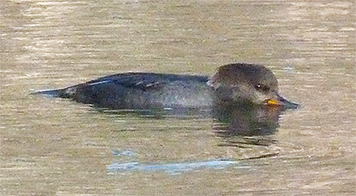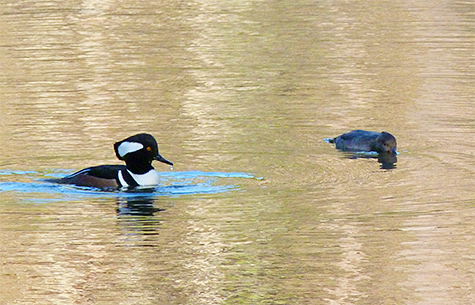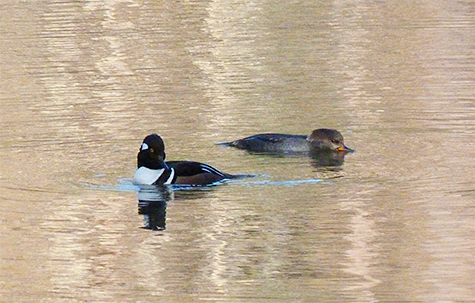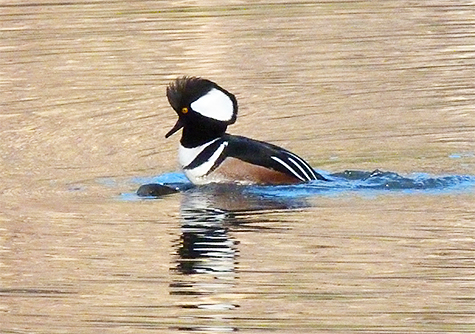
Last week I posted about our visiting hooded mergansers and their pair bond displays out on the Wetlands. There’s another dance, or display, which I also sometimes see here at the Museum. It involves the male swimming zig-zag circles around the female with quick turns to the left, to the right, and back again. The display also includes frequent side to side head shakes, and what I can best describe as nervous twitching, stretching, preening, and other distraction-type behaviors.
All this bobbing and weaving is apparently solicited by the female stretching out “prostrate” on the water. The prone position triggers the male’s behavior. It’s a signal of readiness. This display can be called the mating or copulatory display, as it terminates in copulation.


The female remains patient (seemingly) in her prostrate position until the male either swims off or mounts her. Although the swimming and dancing about can take many minutes, the actual act of mating takes mere seconds, after which the male quickly swims off with head held high, sometimes rearing up and rapidly flapping his wings.

After mating, both the male and female begin to bathe with much splashing and dipping in the water. I’ve seen this postcopulatory bathing behavior in every waterfowl species that I’ve observed mating. In fact, in just about every species of bird that I’ve witnessed mating, the actual mating is followed by some form of bathing or preening, or both. I can’t tell you what that means, nor am I going to attempt an explanation. I assume it’s just part of the ritual.
Why are these ducks mating now and not in the spring? It’s difficult to say if this behavior, occurring in late fall, is legitimate or just practice for the future. Most birds don’t waste time and energy on recreation, especially during winter when energy costs are high. I know that birds can store sperm for later use, from 2-15 weeks in some domestic birds. Each egg in a clutch of twelve is not individually fertilized by a male, the stored sperm is released as the egg is formed and deposited. Storing the sperm makes sense.
Can a female merganser store sperm for 3-4 months (Dec to April or May)? I don’t know. Whether or not this mating will result in fertilized eggs next spring is debatable. I’m sure, though, that there will be more matings of these two birds before it’s time to lay eggs.
The more you know, the more you wonder.